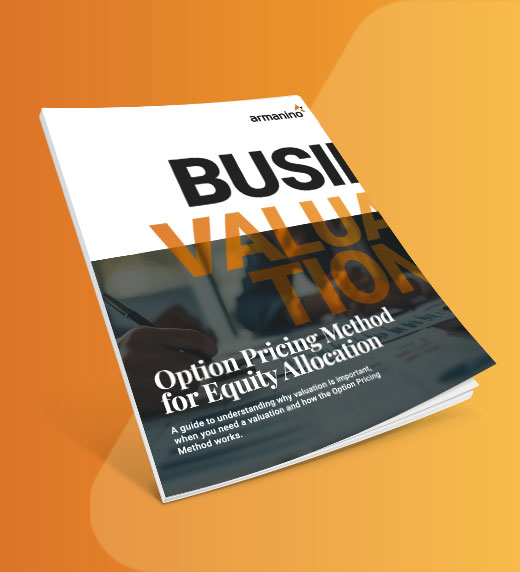
Many SaaS companies use generally accepted accounting principles (GAAP) reporting to evaluate their business performance. But, by relying on basic accounting, your SaaS company may be setting itself up for a rearview-focused, shortsighted assessment — one that simply doesn’t measure up.
SaaS companies that rely on GAAP reporting are getting the “what” without the “how” or “why” of their business, leaving them with a distorted picture of their financial performance and a foggy view of the future.
Moving past basic accounting measures to a more mature, SaaS-specific analysis allows you to get actionable insights that help you position your SaaS company for success. With SaaS metrics, you can make better decisions faster, stay ahead of competition by getting an accurate view of your current and future financial performance, and more confidently plan for the future.
SaaS companies’ income and expenses look different than those of traditional, goods-and-services driven models. While traditional models are largely able to recognize their return on investment in a relatively short time frame, SaaS companies are faced with a much longer horizon.
A SaaS business model’s primary cash investment is in the acquisition of customers. As a result, achieving growth in the SaaS space requires a substantial upfront investment, and it can take many more months or years for a SaaS company to turn a profit. Because of this, the accounting GAAP principles applied to traditional business models don’t fully translate to a SaaS business model.
This spend-first, profit-much-later phenomenon makes the decision to invest in growing new business and commit to substantially negative cash flows a potentially daunting exercise. But if you have the means to navigate these complex waters with strong insights into what makes your operation tick, you can use stronger metrics to make better, faster decisions and ultimately turn a profit.
Below are the three key metrics you need beyond GAAP to measure performance and gain a better perspective on your future.
Estimating the expected value of an upfront growth investment in a SaaS model can be complicated. Because a SaaS model is subscription-based, you must consider the entire lifetime of potential customers when determining ROI.
So, when estimating value in the SaaS space, you use two analytical pillars: lifetime value (LTV) and customer acquisition cost (CAC).
These two metrics are inseparable, and for good reason. When measured against one another as the LTV:CAC ratio, you learn the expected ROI on the upfront customer acquisition investment. This ratio is how SaaS companies measure their unit economics. When applied to specific sets of customers, it can indicate which of your SaaS strategies are likely to add value — and which are likely to fall flat.
To calculate healthy, recurring revenue growth, it is common practice to measure the value of a company’s predictable recurring subscription revenue, whether it comes in either monthly or yearly increments. We call these measurements monthly recurring revenue (MRR) and annual recurring revenue (ARR), respectively.
To get a full understanding of your MRR or ARR, consider the three core ways recurring revenue is generated and lost:
SaaS companies typically see all three of these activities occurring simultaneously. So, in addition to measuring them separately, it is useful to also summarize the net of these three value drivers into one simple equation, solving for Net New ARR (or MRR):
Net New ARR = New ARR + Expansion ARR - Churn ARR
Then, to derive the most meaning from these measurements, you want to track and report them across three dimensions:
Achieving this level of insight can help you learn to optimize within those dimensions, allowing for measurable improvements in marketing strategies, the product profile and overall profitability.
If you are working in a SaaS business model, it’s likely one of your primary concerns is whether your front-loaded cash investment will pay off with positive operating cash flows in the future. Investing a large sum of money without any indication of whether it will pay off can be anxiety-inducing, and an ill-informed decision can make or break the fate of your business.
That’s why cash flow forecasting is critical. Forecasting cash balance and cash runway helps you proactively assess the health of your business, accounting for all drivers of growth, churn and maintaining good customer service. It seeks to not only measure the trajectory of growth plans, but also considers the often-overlooked impact of billing collection and the related discounts typically needed to bill customers upfront.
A proper cash flow forecast also leads to greater visibility when it comes to fundraising needs. It will result in a well-thought approximation of how much cash is needed and by when. It also sheds light on solutions within reach that could drastically reduce the need to fundraise.
Charting your path to net positive cash flow by fine-tuning your forecasting strategy is key toward optimizing a SaaS business.
Making the jump from basic accounting to a more robust financial analysis can seem intimidating, and you might find yourself hesitant to take the leap. But if you explore SaaS metrics beyond GAAP, you can get a deeper understanding of what drives your business, make decisions more quickly and with better information — and chart the future with confidence.
To learn more about making sure your SaaS company has the right processes, tools and resources to be successful, contact our experts.


